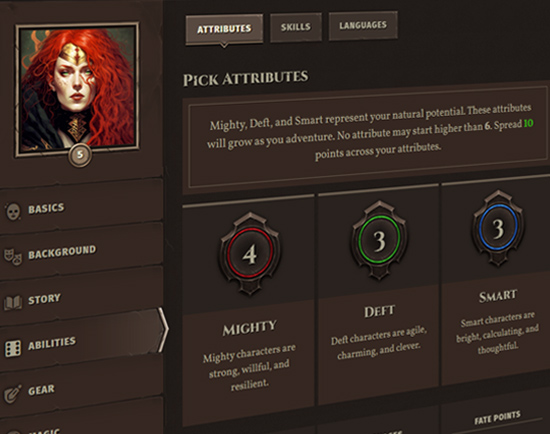About Mastering OSR+
It's important to remember that this Game Master's Guide to OSR+ is a guide for OSR+ specifically, not for gamemastery in general, although the advice contained herein will no doubt serve any game master (GM). This guide was written to help you set up and run a game of OSR+ so that you can take advantage of its strengths as a system. Other roleplaying games will have other needs from a GM, if they have a GM at all.
Assembling Your Table
The first thing you're going to need to do as a GM is find 3 to 5 players for whom you'd like to run a game. You, plus your players, equate to a table. We'll borrow this language from traditional RPGs (that are run at a physical table), even though you can run OSR+ in a digital setting.
Why 3 to 5 Players?
A single session of OSR+ lasts about three hours. You can play for longer, but it becomes difficult to deliver a satisfying experience in less time than this, and we'll delve into why later in this guide.
Three hours, you'll discover, isn't a lot of time, and the more players you have at your table, the more time you'll need for them to interact with you to resolve their action as they engage with the story that unfolds as they play.
As the GM in a game of OSR+, you're the vehicle through which players interact with the environment. This means that you can become a bottleneck in play: you can only focus on and respond to one player at a time, and you can only resolve one action at a time at any given moment. Every time you add another player to the mix, you slow down the cadence of the entire session.
The Magic Number 4
You don't want fewer than three players at your table, or you don't want more than five. Exactly four is the magic number: if you can stick to just four players at your table, you'll have enough time to focus on each of them equally without leaving anybody out of the action.
The number four wasn't arrived at by some magical calculus: it's a matter of playtesting and experience. We've run sessions with just two players and others with six or eight players, but we found that when you have more then five at the table, each player barely has a chance to do anything in the session, which means they're sitting idly by, disengaged with the fiction the majority of the time, and waiting for their chance to act. Players end up actively competing with each other for the spotlight, which fosters an environment opposite of collaborative storytelling.
Problems at the Extremes
With just two players, we found that there's just not enough diversity of thought to create interesting play experiences. This is not to say two players can't come up with tremendously creative ideas, but that roleplaying benefits from a maximal juxtaposition of ideas. Add to this that when you have only two players, they have no opportunity to escape the spotlight. While this can be ideal for some, it can be overwhelming for others, who need time to digest what's happening in the fiction to respond thoughtfully to it.
 Armor
Armor Classes
Classes Conflicts
Conflicts Ethos
Ethos Flaws
Flaws Glossary
Glossary Kits
Kits Maleficence
Maleficence Origins
Origins Shields
Shields Skills
Skills Spells
Spells Stances
Stances Status Effects
Status Effects Tactics
Tactics Talents
Talents Techniques
Techniques Treasure
Treasure Weapons
Weapons











 Hall of Heroes
Hall of Heroes Hall of Legends
Hall of Legends Dungeons & Flagons
Dungeons & Flagons